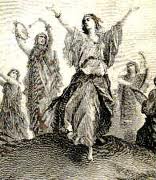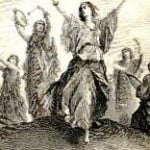Moshe Kempinski
It was very difficult to watch the evacuation of the families from the Ulpana neighborhood of Beit El, as visions of the traumatic Gush Katif expulsions rose before my eyes. The two expulsions were not the same , but nevertheless they were both expulsions. They were both a result of weak Israeli leadership trying to appease world powers. They were both a result of the judicial and political echelons of our government being manipulated by very clear “post Zionist” agendas. Yet still there was a difference.
This expulsion could have ended up like the bloody and violent Amona police riot of 2006. It did not. The residents and their spiritual leadership chose another direction. They did so in spite of the criticism hurled at them by some of the more combative sectors of the camp. In the words of Rabbi Zalman Melamed as he dedicated the new location for the Ulpana in the much larger plot of land; “today, with G-d’s help, we will inaugurate a new neighborhood in Beit El, inside the base, a plot that is 2.5 or 3 times larger than this one. This does not lessen the sorrow and suffering caused by the High Court decision. We pray we will return to these homes, and build additional ones, and the Land of Israel will be built up soon and in our times.”
I thought of Miriam the prophetess. Miriam is called the prophetess” And Miriam the prophetess, the sister of Aaron, took a timbrel in her hand; and all the women went out after her with timbrels and with dances. (Exodus 15:20). Why is she described in this fashion and where do we see its manifestation?
We read in the midst of the slavery the following account “Now a man of the house of Levi married a Levite woman, and she became pregnant and gave birth to a son.( exodus 2:1-2). Yet we know that there were already two older children born to these parents.
The Midrash in tractate Sotah describes subtext. When Pharaoh decreed that all baby boys would be thrown into the Nile ,Amram and Yocheved the parents of Moshe decide to separate so as not to endanger any more children. When they did so , they were followed by most of the other Israelite couples. Desperation and hopelessness gripped the people and thrust them into despondency.
According to this midrash, Miriam approached her father and said, “your decree is worse than Pharaoh’s. Pharaoh decreed against the boys, you decreed against both boys and girls. Pharaoh decreed only in this world, you decreed in this world and the world to come. Pharaoh’s decree may be overturned, your decree (not having children at all) cannot be overturned.” Miriam convinced her father to remarry her mother, and so Moshe and subsequently many other children in many other families were born.
Our sages have remarked that redemption will occur in the future as it has occurred in the past ,in the merit of Nashim Tzadkaniyot, Righteous Women. Such a righteous woman was Miriam the sister of Moshe and Aaron. When all the men in the hovels of the Israelite ghettos of Egypt were busy packing whatever they could for their trek into the wilderness, Miriam and her sisters intuitively packed timbrels and musical instruments. It was those instruments they unpacked and used as they sang and danced in celebration of their crossing of the Reed Sea.
Miriam represented hope in the midst of adversity.
Miriam represented the quenching hope filled waters of redemption. Our sages have taught that the children of Israel were afforded three gifts that were given to them in the wilderness in the merit of their leaders. The Divine clouds of Glory that surrounded and protected the people were given in the merit of Aaron. The manna from Heaven was given because of Moshe and the “waters of the well” were gifted due to Miriam.
That source of waters ended when Miriam died. We read the following painfully brief account of the death of Miriam” Miriam died there and was buried there” (Numbers 20:1). The torah does not even offer even a minor description of the ensuing burial and mourning but does immediately inform us that “there was no water for the people.” (Numbers 20:2)
As the people arrive at Kadesh at the edge of the Desert of Zin and discover the lack of water they cry out “If only we had died when our brethren died before G d! Why have you brought the congregation of G d to this desert, to die there, us and our cattle? Why have you taken us out of Egypt—to bring us to this evil place?” (ibid 20:4-5)
Without the vision of Miriam the people fell again to despondency and fear. People yearn for the calming nourishment of the water but forget the type of spirit and broad long distance vision that enabled the water to appear. That vision and spirit was epitomized by Miriam .She was quickly forgotten when people became engrossed in the difficulties of the here and now. They were so engrossed the neglected to mourn for her.
Miriam offered a sober and faith based response to the setbacks and detours on the road to destiny. That painful and heart wrenching decisions of Rabbi Melamed and the families in the Ulpana echoed that same faith filled vision. It is reflected in the words of one of the expelled residents of the Ulpana neighborhood Baruch Kitay who declared; “This is a dark day for Israel, but not just a dark day..This day marks for us not only destruction of buildings. It marks for us the beginning of new building, of new neighborhoods.”With this vision they too will rejoice with timbrels and song as they will see with their own eyes the rebuilding of this land. As the prophet Yeshayahu says;
” The voice of your watchmen- they raised a voice, together they shall sing, for eye to eye they shall see when HaShem returns Zion.. ” (Isaiah 52:8)

